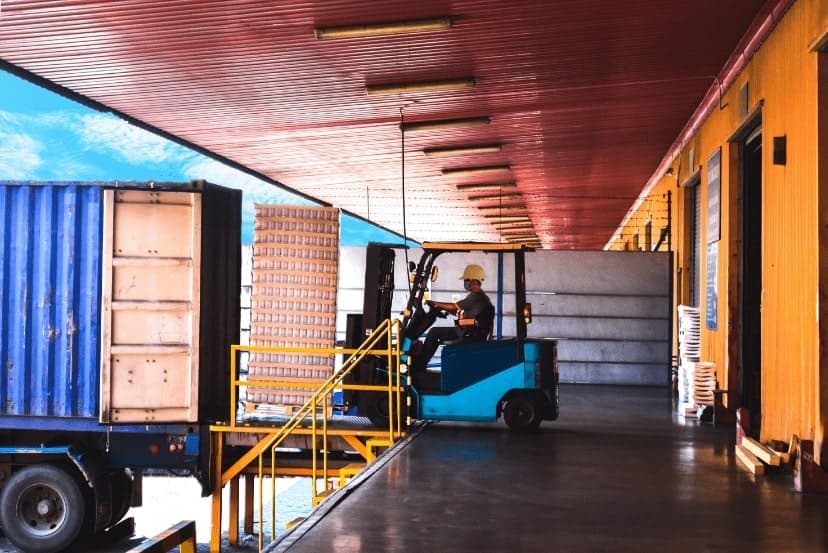Embark on a journey into the bustling world of shipping with a closer look at CFS, or Container Freight Stations. Imagine these stations as the unsung heroes orchestrating the behind-the-scenes dance of cargo before it sets sail across the seas.
CFS, short for Container Freight Station, is not just a warehouse; it’s a crucial hub that shapes the narrative of international trade.
Picture this – goods from around the world converging at a central point, a logistical symphony where items are grouped or separated before their grand voyage. Whether it’s the origin or destination of these goods, CFS plays a pivotal role in ensuring a seamless transition.
In simpler terms, it’s the backstage storage space where products await their moment to shine on the global stage, loaded onto ships and unloaded after reaching their nautical destination.
Join us as we unravel the meanings, roles, and fascinating functions of CFS in the intricate tapestry of worldwide shipping.
Understanding the Role of Container Freight Stations (CFS)
CFS, short for Container Freight Station, acts as a crucial hub in shipping. It’s a warehouse facility managing the grouping or separation of cargo during import or export processes. This station plays a role in both the origin and destination of goods in international trade. In simple terms, it’s a storage space where products are kept before loading onto a ship and after unloading.
For Less than Container Load (LCL) shipments, where cargo comes from multiple customers, it’s gathered in one container and taken to a CFS for consolidation before reaching its final destination.
Typically run by a shipping line or terminal, a CFCs warehouse is strategically located near ports or shipping terminals. These stations handle customs clearance procedures and documentation for shipments. Recognized by customs, a Customs House Agent (CHA) acts as the key intermediary between CFS and the involved parties in the shipping transaction.
CFS Making Shipping Safe, Smart, and Fun
Ever wondered why we have Container Freight Stations (CFS)? Well, they’re like superheroes for shipping! CFS makes sure smaller shipments travel safely to their destinations, using cool tracking and safety measures.
Here’s why CFS is a big deal in shipping:
Easy Tracking: CFS gives each container a special number. It’s like a superhero ID for the container and the stuff inside, so traders can always know where their things are. This unique ID ensures a superhero-level tracking system, providing traders with constant updates on the container’s precise location and status.
Safe Shipping: CFS puts goods in different containers, lowering the chances of things getting damaged. This makes trading between sellers and buyers super smooth. By segregating goods into distinct containers, CFS minimizes damage risks, ensuring a seamless trade experience that builds trust between sellers and buyers.
Smart Records: CFS keeps a neat list of who sent what, where it’s going, and more. It’s like a shipping superhero organizer. This organizer at CFS maintains a comprehensive record, detailing senders, destinations, and more, streamlining the shipping process for ultimate efficiency and organization.
No Customs Hassle: CFS ensures a hassle-free customs experience, smoothing out the paperwork and procedures, relieving stress at the main ports. This streamlined process guarantees a quicker and more efficient transition for goods in the shipping journey.
Saving Money: CFS acts as a cost-saving superhero by consolidating smaller shipments, reducing the movement of empty containers. This efficient approach not only saves money but also contributes to a more sustainable and economical shipping process.
Magic Automation: CFS employs cutting-edge technology for rapid loading and unloading of containers at the dock, creating a seamless and swift process that almost feels like magic. This technological marvel enhances efficiency and ensures a smooth flow in the shipping operations.
So, thanks to CFS, shipping is safer, smarter, and kind of like a superhero adventure!
CFS: Export-Import Hub
Container Freight Stations play a vital role in both loading and unloading goods, serving as crucial hubs for exports from the point of origin and imports at the destination. The import and export procedures conducted by CFS are detailed below.
How CFS Eases Importing Goods and Streamlines Customs Processes
CFS is like a helper for ports when we bring things into a country. Instead of going straight from the port, the goods can go to CFS, reducing port traffic.
For example, let’s say a company in India is getting stuff from a company in the US. The US company prepares documents, and once the goods are at the port in India, they go to CFS. Here’s what happens:
- Customs checks the goods at the port and puts them at CFS.
- Before taking the goods to CFS, the shipping agents file some papers at the port.
- At CFS, they take the stuff out of the containers.
- The Indian company or their helper files more papers with customs, checks the goods, and pays any fees.
- After customs says it’s all good, the goods get a “gate pass” and leave CFS to go to the company in India.
Seamless Exports: How CFS Streamlines Shipping for Companies Worldwide
CFS is like a helper for sending things out of a country. Instead of going directly from the port, the goods can go to CFS, making things smoother.
For example, if a company in India is sending things to a company in the US:
- The Indian company loads the goods on a truck and takes them to CFS with some shipping documents.
- At CFS, they load and organize the goods.
- The goods are checked and packed into containers in a big warehouse.
- A customs officer seals the container, and it goes from CFS to the port.
- Once at the port, the shipping line (a company chosen by the party) sends the goods out.
- CFS makes exporting goods faster and more organized, especially for standard containers like TEU export containers.
The Busy World of CFS: Navigating the Hub of Cargo Management
A Container Freight Station (CFS) is like a busy hub that does many important jobs. Here’s what it does:
Getting and Sending Cargo: CFS is like the middleman between places that send things and places that get them. It makes sure everything is received and sent out smoothly.
Sorting Things: For shipments that come from different people (LCL shipments), CFS puts them together in one container or takes them apart. It’s like putting together a puzzle!
Loading and Unloading Containers: CFS helps pack things into containers for sending out and takes things out of containers when they arrive. It’s like packing and unpacking a giant suitcase.
Temporary Storage: CFS is like a temporary home for things. It keeps cargo and containers safe for a bit before they go on their next journey or get sent somewhere else.
Moving Between Places: CFS helps things move between trains, trucks, and ships, making sure they get to where they need to go. It’s like a traffic director for cargo.
Checking by Customs: CFS helps customs officers look at things going in and out to make sure everything follows the rules. It’s like a security check for packages.
Finding Things: CFS has a special system to know where everything is. It’s like a treasure map but for containers and cargo.
Differences between CFS, ICD, Container Yard, and Bonded Warehouse
CFS (Container Freight Station)
- What it does: CFS is like a busy hub for cargo. It helps in receiving, sending, sorting, loading, and unloading cargo.
- Think of it as: A temporary home for goods, where they get organized before going on their journey.
ICD (Inland Container Depot)
- What it does: ICD is like a stopover for containers away from the seaport. It helps in clearing customs and managing cargo before it continues its journey.
- Think of it as: A pit stop for containers on their way from one place to another.
-
Container Yard
- What it does: Container Yard is like a parking lot for containers. It stores them before they are loaded onto ships or moved to their next destination.
- Think of it as: A giant parking space for containers, making sure they are ready for their next adventure.
Bonded Warehouse
- What it does: A Bonded Warehouse is like a secure storage place for goods. It allows storing items without paying duties until they are ready to be sent out.
- Think of it as: A safe storage room where goods can stay before officially entering a new country.
In a nutshell, CFS is where things get organized for their journey, ICD is a stopover for containers on land, Container Yard is a parking lot for containers, and Bonded Warehouse is a secure storage room without immediate customs duties. Each has its role in making sure goods move smoothly and safely.
Final Words
Container Freight Stations (CFS) are the unsung heroes of shipping, orchestrating the movement of goods behind the scenes. They’re not just warehouses; they’re maestros ensuring smooth international trade. Picture them as superheroes for smaller shipments, offering easy tracking, safe shipping, and smart record-keeping.
CFS simplifies customs processes, saves costs, and adds a touch of magic with automated operations. It’s a reliable helper for both importing and exporting goods, making the shipping experience smoother and more organized.
We also explored the differences between CFS, ICD, Container Yard, and Bonded Warehouse, understanding their unique roles in cargo management.
In a nutshell, CFS is the linchpin in the complex world of shipping, ensuring goods travel safely, efficiently, and with a touch of superhero flair.




